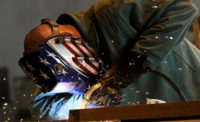Electrical accidents by the numbers

Just five occupational groups account for 80 percent of all fatal electrical accidents, according to Electrical Safety Foundation International (ESFI).
The fatal five:
- Construction Trades Workers (38 percent)
- Installation, Maintenance and Repair Occupations (21 percent)
- Grounds Maintenance Workers (seven percent)
- Transportation and Moving Materials Occupations (six percent)
- Other Management Occupations (four percent)
Contact with Overhead Power Lines was the largest fatal accident category, comprising 44 percent of all electrical fatalities for 1992-2010. Contact with Wiring, Transformers or Other Electrical Components was second, with 27 percent of fatalities, and Contact with Electric Current of Machine, Tool, Appliance or Light Fixture was third, with 17 percent.1
The construction industry experienced 52 percent of total electrical fatalities.
The good news is that since 1992, fatal electrical occupational injuries have declined by more than 50 percent on an annual basis – a trend ESFI says has accelerated since 2006.
Nonfatal electrical injuries have also declined sharply, down 60 percent from their 1992 level.
ESFI, which uses the U.S. Bureau of Labor Statistics’ (BLS) Census of Fatal Occupational Injuries (CFOI) and Survey of Occupational Injuries (SOII) to distill information specifically pertaining to fatal and nonfatal occupational electrical injuries, offers statics and analysis of electrical occupational accidents in a pdf titled, Electrical Safety Then and Now. Click here to visit the ESFI website and download the pdf.
Looking for a reprint of this article?
From high-res PDFs to custom plaques, order your copy today!








